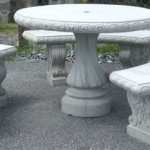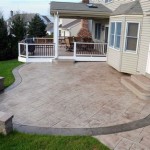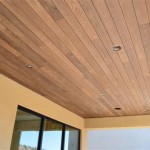Pretty Patio Pavers: Enhancing Outdoor Spaces with Style and Functionality
Patio pavers represent a versatile and aesthetically pleasing solution for creating durable and attractive outdoor living areas. Ranging from simple concrete blocks to intricately designed natural stone, pavers offer a wide spectrum of design possibilities, capable of transforming mundane backyards into elegant extensions of the home. Examining the various types of patio pavers, their installation processes, and long-term maintenance requirements is paramount to making informed decisions for any landscaping project.
Selecting the appropriate paver material is a foundational step that dictates the overall look, feel, and longevity of the patio. Considerations such as climate, budget, and desired aesthetic play crucial roles in the decision-making process. Understanding the properties of different paver materials allows homeowners to optimize their investment and ensure that their patios withstand the rigors of daily use and environmental exposure.
Types of Patio Pavers
Several distinct types of patio pavers exist, each with its own unique characteristics and advantages. Each type of paver caters to specific needs and preferences, allowing for a high degree of customization in patio design.
Concrete pavers are a popular choice due to their affordability, durability, and wide availability. Manufactured from a mixture of cement, aggregate, and pigments, concrete pavers can be molded into a variety of shapes, sizes, and colors. Their uniform dimensions and consistent quality make them easy to install and maintain. Furthermore, concrete pavers are resistant to cracking and fading, making them a practical option for high-traffic areas.
Brick pavers offer a classic and timeless appeal, evoking a sense of tradition and warmth. Made from clay that is fired at high temperatures, brick pavers possess a rich color and texture that adds character to any patio. While generally more expensive than concrete pavers, brick provides exceptional durability and resistance to weathering. Their inherent beauty and longevity make them a desirable choice for homeowners seeking a sophisticated and enduring patio surface.
Natural stone pavers, such as flagstone, slate, and travertine, provide a unique and luxurious look. Each stone paver exhibits natural variations in color, texture, and pattern, creating a one-of-a-kind patio design. While natural stone pavers tend to be more expensive and require more specialized installation techniques, their unparalleled beauty and natural durability make them a worthwhile investment. The porous nature of some natural stones requires sealing to prevent staining and water damage.
Porcelain pavers are gaining popularity as a modern and low-maintenance patio solution. These pavers are manufactured from a dense, non-porous ceramic material that is highly resistant to stains, scratches, and fading. Porcelain pavers are available in a wide range of colors, patterns, and textures, including options that mimic the look of natural stone and wood. Their superior durability and ease of cleaning make them an ideal choice for contemporary patio designs.
Permeable pavers are designed to allow water to infiltrate the ground, reducing stormwater runoff and promoting groundwater recharge. These pavers feature gaps or porous surfaces that allow water to seep through, preventing puddling and erosion. Permeable pavers are an environmentally friendly option that can help to reduce the environmental impact of paved surfaces. They are particularly well-suited for areas prone to flooding or where stormwater management is a concern.
Installation Procedures for Patio Pavers
Proper installation is crucial for ensuring the longevity and structural integrity of a paver patio. A well-executed installation not only enhances the aesthetic appeal of the patio but also prevents issues such as shifting, cracking, and weed growth. The installation process typically involves several key stages, each requiring careful attention to detail.
The first stage involves preparing the site by excavating the existing soil to the appropriate depth. The depth of excavation will depend on the type of paver being used and the desired finished height of the patio. Typically, a depth of 6-8 inches is recommended to accommodate a base layer of gravel and a bedding layer of sand.
Next, a layer of compacted gravel is installed to provide a stable and well-draining base for the pavers. The gravel layer should be compacted using a plate compactor to ensure that it is firm and level. This compacted base is essential for preventing the pavers from settling or shifting over time. The type of gravel used should be appropriate for the soil conditions and the climate.
A bedding layer of sand is then spread over the compacted gravel base. The sand layer should be approximately 1-2 inches thick and should be leveled using a screed board. The sand layer provides a smooth and even surface for the pavers to rest on, allowing for minor adjustments during installation. The type of sand used should be clean and free of organic matter.
The pavers are then laid out in the desired pattern, starting from a straight edge or corner. Spacers may be used to maintain consistent gaps between the pavers. As the pavers are laid, they should be gently tapped into place using a rubber mallet. This ensures that the pavers are firmly seated in the sand bedding layer. The design pattern must be carefully considered to ensure proper alignment and aesthetic appeal.
Once the pavers are laid, a layer of polymeric sand is swept into the joints between the pavers. Polymeric sand is a special type of sand that contains polymers that bind the sand particles together. This helps to prevent weed growth and erosion. The polymeric sand should be activated by lightly watering the patio, following the manufacturer's instructions.
Finally, the patio should be thoroughly cleaned to remove any excess polymeric sand or debris. A sealant may be applied to the pavers to protect them from staining and weathering. The type of sealant used will depend on the type of paver and the desired finish. Regular cleaning and maintenance will help to keep the patio looking its best for years to come.
Maintenance and Care of Patio Pavers
Proper maintenance is essential for preserving the beauty and extending the lifespan of a paver patio. Regular cleaning and preventative measures can help to prevent staining, weed growth, and other common issues. Implementing a routine maintenance schedule can save homeowners significant time and money in the long run.
Regular sweeping is a simple but effective way to keep a paver patio clean. Sweeping removes dirt, leaves, and other debris that can stain or discolor the pavers. A broom with stiff bristles is recommended for removing stubborn dirt and grime. Sweeping should be performed regularly, especially in areas prone to heavy debris accumulation.
Periodic washing with water and a mild detergent can help to remove stains and grime. A garden hose with a spray nozzle can be used to rinse the patio after washing. Avoid using harsh chemicals or abrasive cleaners, as these can damage the pavers. A pressure washer can be used for more stubborn stains, but care should be taken to avoid damaging the pavers or dislodging the joint sand.
Weed control is an ongoing task for paver patios. Weeds can grow in the joints between the pavers, detracting from the patio's appearance and potentially damaging the pavers over time. Various methods can be used to control weeds, including hand-pulling, applying herbicides, and using a weed burner. Polymeric sand can also help to prevent weed growth by creating a barrier in the joints between the pavers.
Sealing the pavers can provide added protection against staining, weathering, and fading. A sealant creates a barrier that prevents water and other substances from penetrating the paver surface. The type of sealant used will depend on the type of paver and the desired finish. Sealants should be applied according to the manufacturer's instructions, typically every few years. Applying sealant not only improves the aesthetic appeal but also contributes to the long-term structural integrity of the patio.
Repairing damaged pavers is important for maintaining the patio's structural integrity and appearance. Cracked or broken pavers should be replaced as soon as possible to prevent further damage. Replacing a paver involves removing the damaged paver, preparing the base, and installing a new paver. In some cases, it may be necessary to replace the surrounding sand and gravel as well. Prompt repairs will help to prevent the problem from escalating and extending the lifespan of the patio.
Addressing drainage issues is vital for preventing water damage and erosion. If the patio does not drain properly, water can pool on the surface, leading to staining, algae growth, and structural damage. Correcting drainage issues may involve adjusting the slope of the patio, installing drainage channels, or improving the soil drainage. Proper drainage will help to keep the patio dry and prevent water damage.

Paver Patio Ideas 5 Inspirational Designs For Comfortable Outdoor Living Leave Your Mark Llc

Planning For A Paver Patio Ideas And Inspiration Town Country Living

Paver Patio Ideas 5 Inspirational Designs For Comfortable Outdoor Living Leave Your Mark Llc

Modern Pavers For Patios Backyards Design Ideas

450 Best Patio With Pavers Ideas Paver Design

Take The Fun Outside With A Paver Patio Seattle Times

Landscape Design 50 Beautiful Backyard Paver Patio Ideas

Patio Pavers From System

40 Paver Patio Ideas To Help You Design Your Outdoor Space

4 Backyard Patio Paver Design Ideas Sure To Impress
Related Posts








